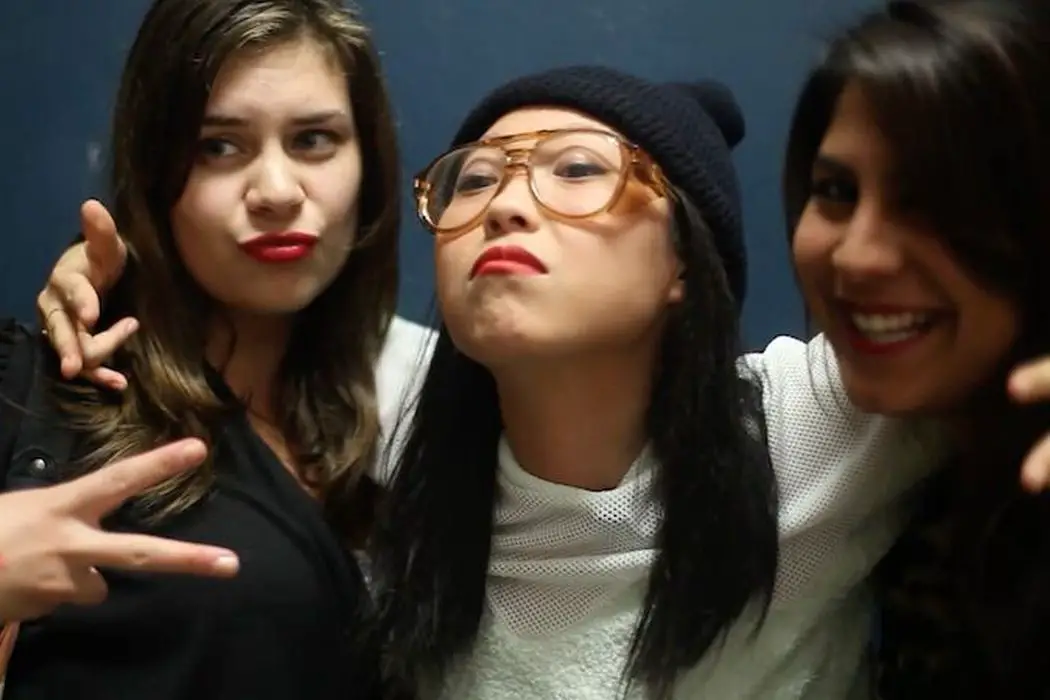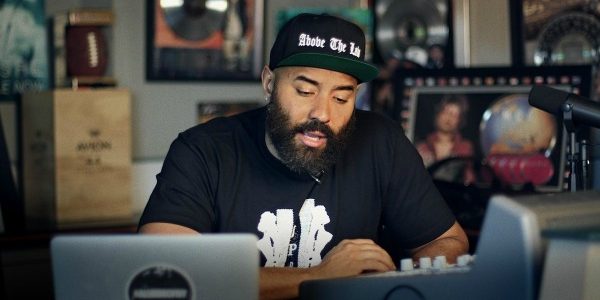BAD RAP: A Hip-Hopumentary That Fails To Get Under The Skin Of Its Subject Matter

Alistair is a 25 year old writer based in Cambridge.…
In the early 2000’s, Jin, a Chinese-American rapper, had enormous success on a battle rap segment on US music show 106 & Park. His freestyles were funny, incisive and generated mass audience interest, leading EMI records to sign him shortly afterwards, making him the first Asian American rapper to be signed by a major record label. He was originally pegged by the music industry as the “Asian Eminem”, with hopes that he would break down the pop culture barriers that have halted many Asian American artists from American success.
Then, his album was delayed by over a year, a likely breakout single featuring Kanye West was cancelled for fear of over-exposing Kanye (something I suspect Kanye wouldn’t have minded too much), and the first single he released appeared to rehash many of the outdated stereotypes thrown in the direction of Chinese people. Jin is one of the Asian American rappers cited by the artists in Bad Rap, a new documentary depicting the fortunes of four very different hip-hop artists who are trying to overcome the ethnic barrier to achieve mainstream success in the States.
Too funny to be taken seriously?
Director Salima Koroma aims to answer the worthwhile question of whether a rapper from an Asian American background can be taken seriously and make it big in the hip hop world. However, in exploring these four distinctive personalities, she sometimes refuses to acknowledge that some of the MC’s featured make music that can be charitably be described as a “comedic novelty”, with more in common with Lil Dicky than Kendrick Lamar. Being taken seriously in the industry is one thing, but making music that can be taken seriously is a question that is oddly evaded altogether.

The fact that the performers are going for laughs isn’t necessarily a problem (it’s hard to argue against the existence of a song like “My Vag”, a joyously crude track from Awkwafina), but it does seem to detract more from the cause as a whole. As a fresh, funny YouTube clip, a song like the aforementioned gynaecological banger can prove infectiously fun, but as an argument for more visibility for Asian American rap, arguing the case with a song designed as an expertly told three minute gag isn’t the best tool to have at your disposal.
However, Awkwafina feels like a socially conscious rap mastermind in the mould of early Public Enemy in contrast with Rekstizzy, the closest thing the documentary has to a Spinal Tap style figure. As hilarious as it is to see him describe himself as a Kanye West-inspired visionary, before unveiling an idea for a music video where he sprays condiments on to women’s butts, Bad Rap appears to take his self-proclaimed artistry at face value.
Again, as entertaining as it is to spend time with him, the contrast between the music he’s producing (which, I have to confess, is genuinely awful) and his thoughtful comments on breaking down barriers in the hip hop world couldn’t be at greater odds with each other. Spending time with Rekstizzy, who is relatively obscure compared to the other featured artists, is something of an odd move; it doesn’t help further the argument as to why Asian rap is so vital in pop culture, while his own self-described, pro-USA persona isn’t explored as incisively as it should be, considering the subject matter directly deals with racial identity.
Fun to spend time with, even if Bad Rap fails to make the case for their music
One thing Koroma expertly does is explicitly outline the fact that her subjects are born entertainers, who you can’t help but root for. The rapper whose talent is catered for the most is Dumbfounded, a Korean-American performer who we see returning from a hiatus in the music industry back to the heights of his blossoming battle rap career, helped in no small part by the fact his biggest fan is Drake, who very publicly praises him at every opportunity.

Invited to perform at a battle rap concert hosted by Drake, Dumbfounded proves to be an infectiously likeable presence; he doesn’t have a self-confident hip hop swagger, even appearing awkward as he is completely destroying every MC he is battling against. The sections with Dumbfounded are the strongest in Bad Rap, in part because these are the ones where the issue of race is dealt with most directly; all opposing MC’s rapping against him are hung up on the same outdated racial stereotypes and cheap punchlines that are causing him to very visibly suppress eye rolls on stage.
Not only this, he has to deal with press interviewers trying to be funny by asking him who would win in a fight between Bruce Lee and Jackie Chan, for example.
The fact Drake is depicted as being the only person in the press room interested in his lyricism and artistry is telling; he too has had to overcome unnecessary barriers (in his case, being Jewish and Canadian) to be elevated to his current position in the rap world. In a film directly about whether Asian Americans can achieve success in the hip hop game, the segments with Dumbfounded are the only time Bad Rap addresses the racial aspects in an incisive way; all interviewees discuss the subject at length, yet he is the only one whose on screen experiences elsewhere depict the very same issues he addresses to camera.
For a brief eighty minute film chronicling the professional ambitions of four different performers (the fourth performer, Lyricks, is a socially conscious performer who often feels like an afterthought despite offering the most interesting personality crisis, which remains under-examined), the film needlessly tries to add more elements at play. In the middle of Bad Rap, Koroma diffuses momentum by asking three different music critic/industry voices to listen to songs by the four artists included here.

On paper, this seems like a good idea in order to address whether Asian American acts have potential for success in the industry, but in execution, we are merely watching three people listening to some music we’ve already been extensively subjected to, whose eventual opinions prove to be something of an anticlimax.
Conclusion
Bad Rap takes an argument that deserves to be had in pop culture, then frustratingly refuses to explore it in the depth it deserves. As likeable as the interview subjects are, we aren’t left with any deeper insight in to their frustrations with the music industry that we couldn’t already assume were the case prior to watching. Koroma should deservedly have a bad rap for her debut, as the trials and tribulations of these interesting characters are worthy of a much deeper examination than the face value glance offered here.
What are the best music documentaries?
Bad Rap premiered at the Tribeca Film Festival last month. It premiers on VOD Tuesday, May 23 on all major platforms including iTunes, Amazon, Google Play, and Vudu.
https://www.youtube.com/watch?v=dNjbnQmb6vE
Does content like this matter to you?
Become a Member and support film journalism. Unlock access to all of Film Inquiry`s great articles. Join a community of like-minded readers who are passionate about cinema - get access to our private members Network, give back to independent filmmakers, and more.
Alistair is a 25 year old writer based in Cambridge. He has been writing about film since the start of 2014, and in addition to Film Inquiry, regularly contributes to Gay Essential and The Digital Fix, with additional bylines in Film Stories, the BFI and Vague Visages. Because of his work for Film Inquiry, he is a recognised member of GALECA, the Gay & Lesbian Entertainment Critics' Association.













